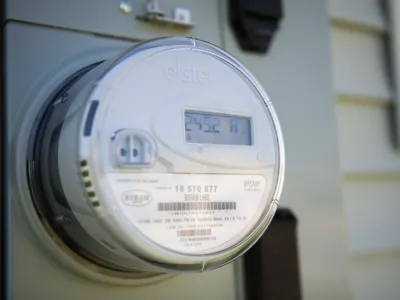CUB petitions PUC to unleash consumer energy data in the public interest

Published August 6, 2019 Today, CUB filed a formal request that the Public Utilities Commission (PUC) set rules to make electricity data available for research and analysis that can reduce waste, save consumers money, and cut emissions.
CUB’s request for Open Data Access Standards
CUB has asked the PUC to adopt Open Data Access Standards that would allow any party to request – and a utility to provide – data on when and where customers use electricity. This data can be used to test out different electricity rate designs and programs. It can allow us to design electricity rates to maximize the efficiency of the utility system, saving consumers money. It can show us how various options will impact real people, so that we don’t have to rely on “common knowledge” assumptions or draw conclusions about an “average” customer. It can help us understand how to design and target programs to help particular customer segments. And once the data is available, creative people will, no doubt, find uses for it that we haven’t yet imagined. The standards that CUB has proposed would allow two types of data to be requested. Data from multiple customers in a geographic area could be aggregated into a single data point – for example, so the owner of a multi-unit building could see total energy use in the property (aggregated data). Or, data from individual customers could be requested, provided that the data set is large enough so that no individuals could be identified (anonymized data).
Protecting consumers’ privacy
Customers’ privacy is of the utmost importance. For any number of reasons, individuals or businesses might not want information about their energy use to be out in the world. No Minnesota law currently protects energy use data (and that’s one reason CUB sought to a law on the topic last legislative session). By order of the PUC, though, utilities are prohibited from sharing data without customer consent, unless the utility has “adequately protected the anonymity” of the data. The problem is that there is not a reliable definition of what it means for a utility to “adequately protect” anonymity. So, informed by national best practices and standards that have proven to work in Illinois, CUB has proposed specific boundaries to ensure customers’ privacy while making important energy data available in the public interest. The standards we’ve put forward are informed by DataGuard, an initiative led by the U.S. Department of Energy, and they are modeled on the standards that are in operation and proving to work in the state of Illinois. Aggregated data must include at least four customers, and no single customer may comprise more than 50 percent of the total energy use, unless customers give express permission to be included. Anonymized data sets must include at least 15 customers, with no single customer comprising more than 15 percent of energy use. Either data set may only be requested by set geographic boundaries, so no requester would be able to manipulate multiple data requests in order to identify a particular customer or customers.
Analysis enabled by open energy data
While this effort will be a first for Minnesota, two Illinois utilities – Commonwealth Edison and Ameren – make this data access available, and the data is proving valuable for consumers there. For example, CUB Illinois and the Environmental Defense Fund used data from 344,000 households in the Chicago area to model how customers would fare under a “real-time pricing” program. They found that 97% of the households in the study would have paid less for electricity under real-time pricing – saving consumers nearly $30 million. CUB Illinois also conducted an analysis of 2.5 million customers that revealed six unique usage profiles for different kinds of customers, correlating factors like income, age, education, and location. This analysis suggests that lower-income customers on the whole are paying more than the cost of providing their electricity, and are actually subsidizing higher-income households. More information about these analyses and others can be found at www.BigEnergyData.info.
The need for action in Minnesota
In Minnesota, these kinds of analyses can’t be done by anyone except the utility. That limits how effective CUB can be to advocate in customers’ interests, and it limits the ability of researchers and even the PUC to understand the options before them. This data will be useful in understanding how Minnesotans use energy and who pays the costs. Allowing access to energy data helps to address, at least a little bit, the imbalance of information between the utilities and everyone else in these settings. And data access is increasingly important. About 60 percent of Minnesota Power customers now have smart meters, and more meters are being upgraded every year. Xcel is expected to propose investment in smart meters very soon. These meters can provide much more granular data about how and when power is being used, and can enable time-of-use rates and demand response programs to increase system efficiency and give customers more options to cut their bills. The meters can more than pay for themselves if they’re put to good use, but they’re not cheap, and it is utility customers who are paying for the investment. Access to utility data helps to leverage these investments and make them more cost-effective. The information that these new meters and associated software systems provide must be allowed to be put to work in consumers’ interest. Open data access can enable the analysis that’s needed to reduce greenhouse gas emissions, increase energy efficiency, and reduce costs for everyone. Minnesota can benefit from the experience of utilities, advocates, and regulators elsewhere in the country who have drawn up and tested rules to enable data access without risking consumer privacy. The time is now to unleash the potential of energy data for Minnesota consumers.